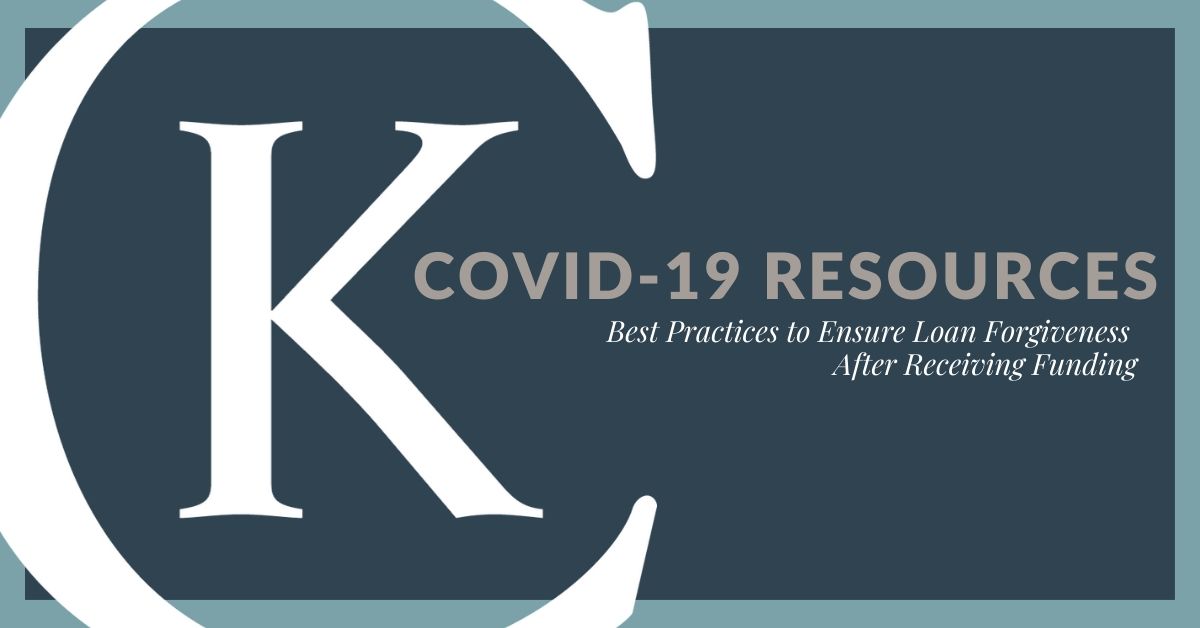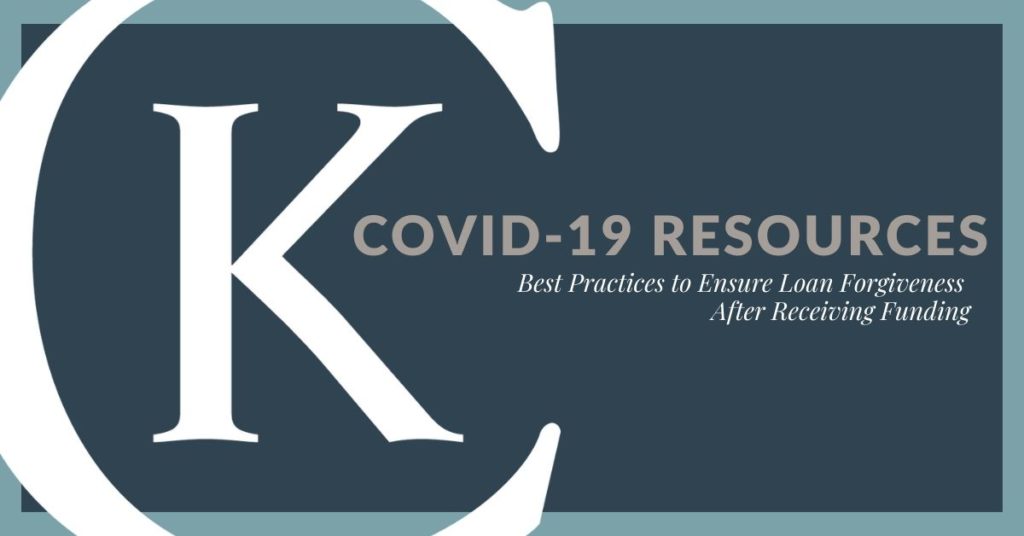
You’ve talked to your banker, you’ve submitted your Paycheck Protection Program (PPP) application and you’re awaiting funding. But that’s not where your work ends. What happens once the funds are received? There’s much to consider once you receive the funds and proper documentation will be critical to ensure your loan is forgiven.
(PPP) application and you’re awaiting funding. But that’s not where your work ends. What happens once the funds are received? There’s much to consider once you receive the funds and proper documentation will be critical to ensure your loan is forgiven.
When can I expect funding? And what if I haven’t filed for a PPP loan yet?
As we’ve seen throughout the PPP process, most banks have their own process. Being the first to apply hasn’t necessarily meant the first to receive SBA funding. The SBA loan application changed multiple times which has caused turmoil for the banks’ processing system.
Is it too late to apply? On the contrary,we have a better understanding of each bank’s application process. In addition, if you are concerned about the timing from your application filed with one bank you can submit another application with another bank. Only one application will be accepted, the second application will be discarded since you have already been approved by the SBA.
When will I receive funding? We’ve had multiple clients receive funding or have scheduled dates for loan signature. Talk to your lender about when you can expect to receive funding as timing seems to be bank specific.
I received funding. Now what?
The loan forgiveness provision is a valuable aspect of the PPP that you should take full advantage of. You are eligible for loan forgiveness for the amounts you spend on certain qualifying expenses over the eight weeks from the date you received funding. The qualifying expenses include payroll costs, rent, interest on mortgage debt and utilities.
Another way to think about it is the SBA just gave you a glass of water. They require you to pour at least 75% of the qualifying expenses into payroll costs. The remaining 25% can be poured into rent, interest on mortgage debt and utilities. Planning your spending over the next 8 weeks will be critical as the SBA is not requiring you to give back any water as long as you use it appropriately.
In addition, if the number of full-time employees or payroll costs are reduced by 25 percent or more, the amount of the loan eligible for forgiveness will be reduced. However, if you restore your payroll levels by June 30, 2020 these factors will be omitted from the calculation.
If you receive a PPP loan, EIDL grant, or EIDL for COVID-19 damages, we recommend putting the loan or grant proceeds in a separate checking account. Carefully track and document a clear paper trail of the expenditures for which the money is used. Although we are still awaiting additional guidance from the SBA regarding forgiveness, we believe you will need to provide clear evidence of your authorized uses of the money in order to qualify for loan forgiveness. Not only is clean record keeping important for forgiveness, but misusing funds can result in the SBA requiring the repayment of the entire or portion of the loan.
Lastly, mark your calendar. Borrowers will need to file an application for forgiveness with their bank once the 8-week period is over. Your lender will have 60 days to make a determination regarding forgiveness.
Maximize Forgiveness
We are working with our clients to develop strategic roadmaps for the next 8 weeks of payroll and operating expenses. Remember, 75% of the loan must be used for payroll costs. You might consider paying employee bonuses or accelerating retirement contributions over the 8-week period to ensure maximum loan forgiveness.
Other Frequently Asked Questions
- Will I have to pay taxes on the amount of debt forgiven on the loan? No, the law specifically states that forgiven PPP Loans will not be considered forgiveness of debt income.
- What if I can’t rehire my employees at the time when I receive funding? Although a major benefit of the PPP is the forgiveness provision, if you are not able to reopen or do not have work for your employees until further down the line, you can still use the funding for other authorized uses. Any part of the loan that is not forgiven will accrue interest at a rate of 1% and will have a 2-year maturity date.
- I’m self-employed. What should I do to ensure forgiveness? This is an area of the program that needs clarification, stay tuned as the self-employed applications just started to be accepted on April 10th.
- What if I was denied a PPP loan? Consider applying for an Economic Injury Disaster Loan (EIDL). EIDLs have low rates, longer repayment terms and can be used for more purposes than the PPP loans. EIDLs are not eligible for forgiveness but they do include a $10,000 grant that does not need to be repaid.
